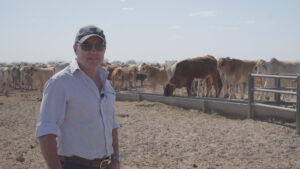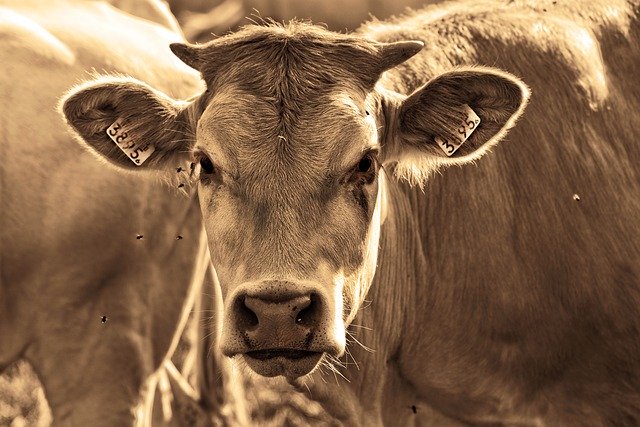August 31, 2020
By Mark Peart, CEO, DIT Technologies
As we closed off Direct Injection Technologies (DIT) accounts for the 2020 audit, I paused to read the latest email updates on agtech. I noted the excitement, the forecasts, the ‘product’ and often the lack of matching producer demand and thought back to when I ‘zero-started’ DIT. I reflected that few of the articles highlighted the energy, belief, and perseverance that will be required if any of these exciting new agtech ideas are still going to be around in three years. I thought maybe it was useful to tell you my experience – if only to alert you to some of the dry gullies ahead.
My name is Mark Peart, founder and CEO of DIT. We design, manufacture, distribute, and maintain water supplementation delivery and monitoring platforms across the Australian livestock sector. My father and uncle developed rudimentary automated water supplementation systems in the 1980s in response to Northern Australia’s inherent challenges for livestock producers. I found heli-mustering and entrepreneurship more exciting than servicing water medication systems and spent 20 years flying and working across the northern beef sector starting businesses, building businesses, making mistakes, and losing businesses. What I never lost was the scale of Australia’s pastoral sector, the challenges of servicing it, and the massive payoff that incremental improvement delivered at that scale.
Age slowed my father, but he kept refining the original automated water medication systems he initially built, upgrading them with improved software and modern hardware. The demand for a platform that allowed the safe and efficient delivery of urea and phosphorus to the rumen of cattle had continued to build. I bought the assets of the business from my father, initially as a way to spend more time with him and support him further into retirement, not expecting to focus fully on the agtech opportunity.
The North was in the grip of an extended drought and livestock producers fully recognized the need to better utilize the feed stocks that remained. Interest in supplementary feeding was strong and the traditional method of manually distributing dry-lick material was exhausting livestock producers’ resources – both physical and financial. Inbound enquiry for my father’s old systems was growing so I sensed an opportunity to grow the business.
I did what most others have done – I spoke to friends and family and raised a small amount of capital to push the business to a commercial phase. I then crowdfunded additional equity. We could see an opportunity to integrate the delivery platform with the supplement manufacture. We had a clear problem identified and what appeared to be the technology to solve it, so this would be easy, I thought. It has been far from easy, and I think I have committed just about all the mistakes possible, but we are still alive and in the market!
Rather than drag you slowly into despair I’ll summarize the key challenges as I suspect they are common to most agtech start-ups.
1). We found out our tech required new code, hardware adaption, and integration, so it has been a continual process of improvement and fine-tuning that soaks up capital.
2). We did not anticipate just how hard it is to get average producers to adopt new technology, nor how much support would be required to get through market channels – the leaders are no problem.
3). The markets we anticipated to drive volumes had structural challenges we did not understand, yet others grew without our focus – how to distribute across these became a challenge.
4). Raising capital distracted us and limited us.
5). There will always be a ‘black-swan event’ you don’t anticipate.
6). We scaled our business before we nailed it – the reverse to theory – now we have scaled down and are starting to nail it.
What hasn’t changed is the need to solve the problem of low pasture quality impact on livestock productivity. Without that inherent demand by producers for a solution, the challenges would have killed our business.
So always start with the problem – not the shiny idea/product! Find the early adopters and champions and over service them – don’t assume everyone else will understand your solution and adopt. Build patiently through early adopter results and collaboration. Don’t think you will ever stop investing in the business or product – raising and managing capital is just as much a skill set. But you’ll know all this or ignore it now as the idea of a solution is too powerful, so at the least slow down and be patient.
And what about DIT? We’ve learned to become nimble and focused. We evolved our product offering and model. Sales have built strongly in the last 12 months, we now have over 300 units in the market supplementing upwards of 300,000 head of cattle that are importantly, with industry leaders who share the outcomes.
Capital remains a challenge to business development as do COVID-19 restrictions. We will report our latest set of audited financials and plans to a growing but impatient shareholder group. We will find more equity capital. Our feet are calloused enough now that we’ll stop halfway up those dry gullies rather than keep running to the end of them. We’ll survive. I hope some of this may help you starting out on your agtech dream.
ABOUT THE AUTHOR:
 Mark’s passion and skill base lies in recognizing opportunities in business and technology and making them commercially viable. Mark grew up on the land and is a strong advocate for introducing technology into agriculture to increase returns for producers. Mark is the Founder and CEO of DIT Technologies and has a strong vision to grow the business internationally.
Mark’s passion and skill base lies in recognizing opportunities in business and technology and making them commercially viable. Mark grew up on the land and is a strong advocate for introducing technology into agriculture to increase returns for producers. Mark is the Founder and CEO of DIT Technologies and has a strong vision to grow the business internationally.
*All views, data, opinions and declarations expressed are solely those of the author(s) and not of Global AgInvesting, GAI News, GAI Gazette, or parent company HighQuest Group.

Let GAI News inform your engagement in the agriculture sector.
GAI News provides crucial and timely news and insight to help you stay ahead of critical agricultural trends through free delivery of two weekly newsletters, Ag Investing Weekly and AgTech Intel.




